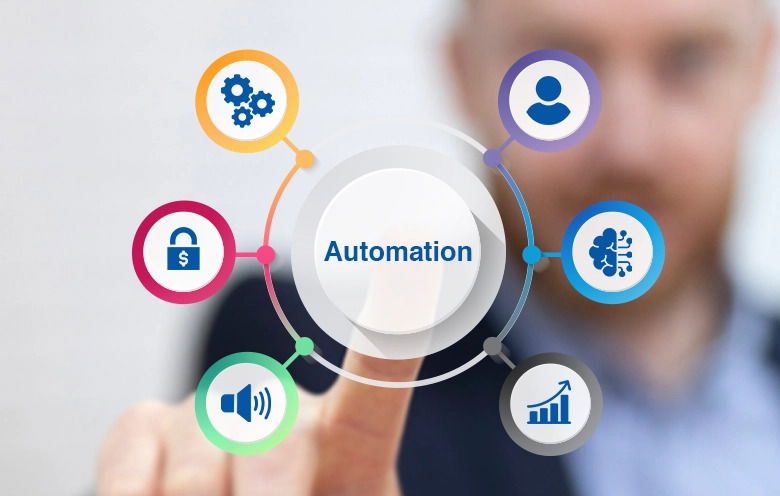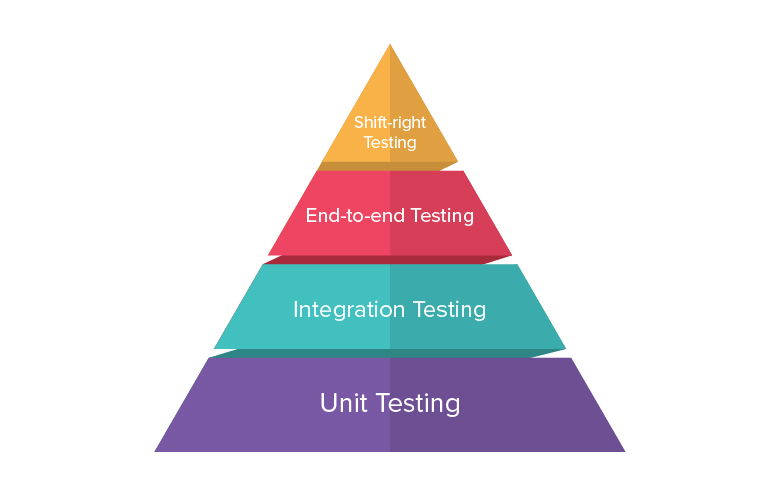As software applications become increasingly complex, it is essential to ensure that individual components or microservices work reliably and efficiently. One way to achieve this is through automated microservices testing, which can save time, reduce costs, and provide more accurate results than manual testing. However, ensuring that microservices are performing optimally is not just a matter of running tests. It is also necessary to analyze and interpret the test results to identify areas for improvement. And the way the market size of automated testing is growing, it is estimated to reach $80 billion by 2032.
Having said that, let’s understand the concept of microservice and the mechanism behind it.
What is a microservice architecture?
Microservice architecture is a software development approach where an application is built as a collection of small, independent and loosely coupled services that communicate with each other through APIs. Each service is designed to perform a specific business task, and together they make up the entire application.
The microservice architecture is based on the idea of breaking down an application into smaller, self-contained services, each with its a specific functionality. Each service is developed, deployed and maintained independently of the other services. This allows for increased flexibility, robustness and maintainability of the application.
Unlike monolithic systems, microservices are designed to adapt to the changing demands. This is one of the many reasons why businesses should switch from a monolithic to a microservice architecture. In a microservice architecture, each service has its own database, and it can use any technology stack and programming language that best suits its requirements. Each service can also be scaled independently of the others, allowing for better resource utilization and faster response times.
Communication between services is usually done through RESTful APIs or message queues, and each service can be deployed on its own server or container.
Some advantages of microservice architecture include:
- Better scalability: Each service can be scaled independently, allowing for better resource utilization and faster response times.
- Improved fault isolation: Since each service is independent, a failure in one service will not affect the other services.
- Greater flexibility: Each service can use the technology stack and programming language that best suits its requirements.
- Easier maintenance: Since each service is small and independent, it is easier to maintain and update.
- Better team organization: Each service can be developed and maintained by a separate team, allowing for better organization and faster development.
Challenges in testing a microservices architecture
Testing microservices can be challenging for the following reasons:
1. Distributed architecture: Microservices are designed to be highly decoupled and distributed, which makes it difficult to test the system. Each microservice has its own data storage, network communication and business logic, which means that testing each service independently is necessary.
2. Integration testing: Since microservices communicate with each other via APIs or message brokers, testing the integration of these services can be challenging. Testing the flow of data between different services and ensuring that the data is consistent can be time-consuming and complex.
3. Service orchestration: The coordination of different services is crucial. Testing the orchestration of different services and ensuring that the system behaves as expected can be a challenge.
4. Dependency management: Microservices rely on various third-party services, APIs, and databases. Testing these dependencies and ensuring that the system is resilient to failures in these dependencies is challenging.
5. Environment management: Since each microservice has its own environment and dependencies, managing test environments can be complex. Ensuring that the test environment mimics the production environment accurately can be time-consuming and resource intensive.
6. Performance testing: Testing the performance of microservices can be challenging due to their distributed nature. Load testing, stress testing, and latency testing can be complex and require sophisticated tools.
7. Security testing: Security is critical. Testing the security of each service and ensuring that the system is secure can be challenging.
Automating microservices testing requires a well-defined test strategy and scenario. Here is an example of a test strategy and a few scenarios for microservices testing, along with a diagram:
Testing automation strategy for microservices:
The primary objective of microservices testing is to ensure that individual services function correctly and efficiently. In addition, they must ensure that they can communicate with other services without causing errors or bottlenecks. Here are a few key aspects of the microservices test strategy:
1. The testing of each microservice should be automated using appropriate testing tools, such as JUnit, Mockito, or Selenium.
2. The testing framework should integrate with continuous integration and deployment tools to ensure that new versions of services are automatically tested and deployed.
3. The test environment should replicate the production environment as closely as possible to ensure that the testing results accurately reflect the behavior of the system in production.
4. The tests should cover both positive and negative scenarios to ensure that the system is robust and can handle unexpected events.
Different microservices testing scenarios
1. Integration Testing: This type of testing ensures that the microservices can communicate with each other correctly. It tests whether the service is receiving the correct input and returning the expected output.
2. Load Testing: This type of testing checks how the microservices perform under a specific load. It helps determine the maximum capacity of the service and how it can handle peak traffic.
3. Security Testing: This type of testing ensures that the microservices are secure and can protect against threats such as SQL injection, cross-site scripting (XSS), and other common web application attacks.
4. Performance Testing: This type of testing checks the performance of the microservices under different conditions such as the number of requests made, the size of the data, and other factors.
5. API Testing: This type of testing checks the functionality of the APIs exposed by microservices. It ensures that the APIs are working as intended and that the responses are correct.
Approaches to testing microservices and testing phases
Testing microservices can be challenging due to their distributed and independent nature. However, several approaches to testing microservices can help ensure their reliability, scalability and performance. Here are explanations of five common approaches to testing microservices and the testing phases associated with each approach:
1. Unit Testing: Unit testing is a testing approach that focuses on testing individual pieces of code or units in isolation. In microservices, unit testing involves testing each microservice’s functionality, such as API endpoints or data transformations, to ensure they behave as expected. Unit testing is typically the first testing phase in the development cycle, and it helps identify issues early in the development process, reducing the cost of fixing bugs later.
2. Integration Testing: Integration testing involves testing how different microservices work together as a group. In microservices, integration testing involves testing the interactions between microservices to ensure they work together as expected. Integration testing is typically performed after unit testing and helps ensure that the microservices can integrate and function as a cohesive system.
3. End-to-End Testing: End-to-end testing involves testing the entire system, including all microservices, to ensure they work together as expected. In microservices, end-to-end testing involves testing the interactions between microservices, such as API requests and responses, to ensure they integrate correctly. End-to-end testing is typically performed after unit testing and integration testing and helps verify that the entire system works as expected.
4. Shift-Right Testing: Shift-Right testing involves testing in production-like environments and with real data to identify issues that may not have been discovered in earlier testing phases. Shift-right testing involves deploying microservices to production-like environments, such as staging or pre-production environments, and running tests against them. This approach helps identify issues that may only arise in production, such as scalability or performance problems.
The final say
In summary, testing microservices requires a range of testing approaches to ensure their reliability, scalability and performance. By using unit testing, shift-right testing, end-to-end testing, contract testing, and integration testing, you can identify issues early in the development cycle, reduce the cost of fixing bugs later, and ensure that your microservices work together as expected. If you’re willing to partake in microservices development to build streamlined solutions, you can get in touch with us, and we’ll get you started.




